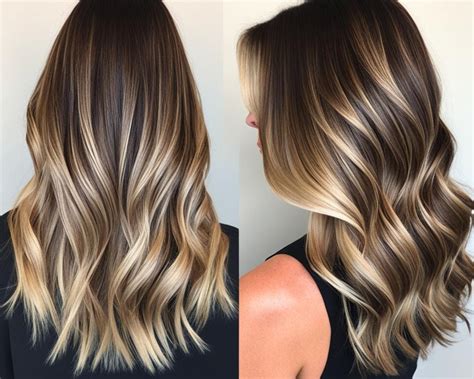Introduction
Balayage, a French technique translating to “to sweep,” is a freehand hair coloring method that creates natural-looking, sun-kissed highlights. It can be applied partially or fully, resulting in distinct looks tailored to individual preferences. This article delves into the multifaceted world of partial and full balayage, exploring their key differences, benefits, and considerations.

Key Differences between Partial and Full Balayage
| Feature | Partial Balayage | Full Balayage |
|---|---|---|
| Coverage | Partial highlights focused on specific areas (e.g., face frame, ends) | Highlights applied throughout the hair, from roots to ends |
| Intensity | Softer, more subtle highlights | Bolder, more impactful highlights |
| Maintenance | Less frequent touch-ups (every 6-8 weeks) | More frequent touch-ups (every 3-4 weeks) |
| Cost | Typically less expensive than full balayage | Typically more expensive than partial balayage |
| Time | Shorter application time (1-2 hours) | Longer application time (2-4 hours) |
Pros and Cons of Partial and Full Balayage
Partial Balayage
Pros:
- Natural-looking, subtle highlights
- Low maintenance
- Cost-effective
Cons:
- Limited coverage
- May not be suitable for drastic hair color changes
- Can enhance existing highlights
Full Balayage
Pros:
- Bold, transformative highlights
- Can achieve significant hair color changes
- Creates a cohesive, sun-kissed look
Cons:
- Higher maintenance
- More expensive
- Can be drying on hair
Which Balayage Technique is Right for You?
The choice between partial and full balayage depends on your individual preferences, hair texture, and desired outcome.
Partial balayage is ideal for:
- Those seeking natural-looking highlights
- People with shorter hair
- Individuals with fine or thin hair
- Those on a budget
Full balayage is suitable for:
- Those desiring a bold, sun-kissed look
- People with longer hair
- Individuals with thicker or coarser hair
- Those willing to invest in higher maintenance
Common Mistakes to Avoid with Balayage
- Over-processing: Balayage requires precision and should be performed by a skilled hairstylist. Over-processing can damage hair and lead to breakage.
- Unrealistic expectations: Balayage is a gradual coloring technique that takes time to achieve desired results. Be patient and avoid drastic color changes.
- Ignoring hair care: Balayage can be drying on hair. Implement a consistent hair care routine that includes hydration and protection.
Why Balayage Matters
Balayage has become a popular hair coloring technique for numerous reasons:
- Natural appearance: The freehand application creates natural-looking highlights that mimic the sun’s effects on hair.
- Customization: Balayage can be tailored to individual preferences, creating a unique and flattering look.
- Damage reduction: Compared to traditional highlighting techniques, balayage minimizes damage to hair.
Benefits of Balayage
- Enhanced hair texture and volume
- Improved skin tone and complexion
- Reduced appearance of gray hair
- Versatile, suitable for all hair types and colors
Conclusion
Partial and full balayage offer distinct advantages and can cater to a wide range of hair and style goals. By understanding the key differences, pros, cons, and factors to consider, you can make an informed decision and achieve your desired hair transformation. Remember to consult a skilled hairstylist and maintain proper hair care to ensure healthy, vibrant results that will turn heads.
Additional Information
- According to the American Salon Council, balayage is the second most popular hair coloring technique in the United States.
- Balayage can take 1-2 hours for partial coverage and 2-4 hours for full coverage.
- The cost of balayage can vary depending on the salon, stylist, and extent of coverage.
- Balayage can be combined with other hair coloring techniques, such as ombre or babylights, to create even more customized looks.
